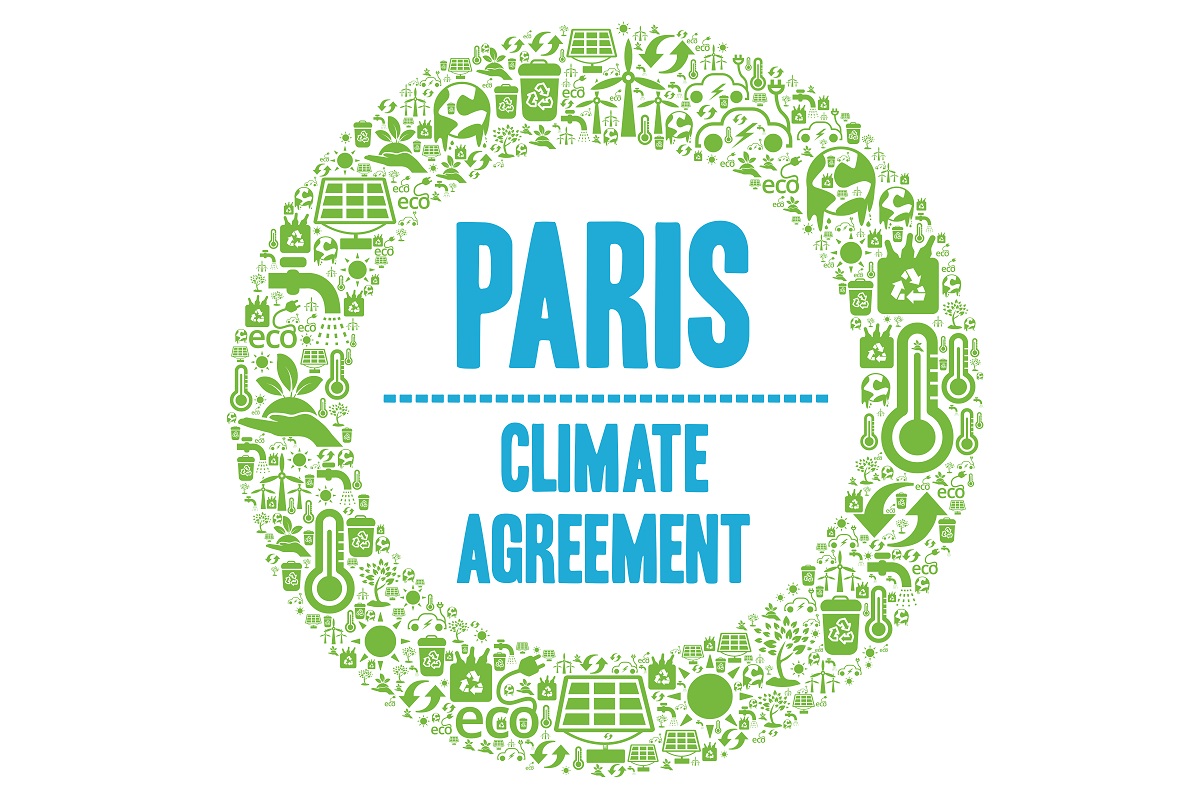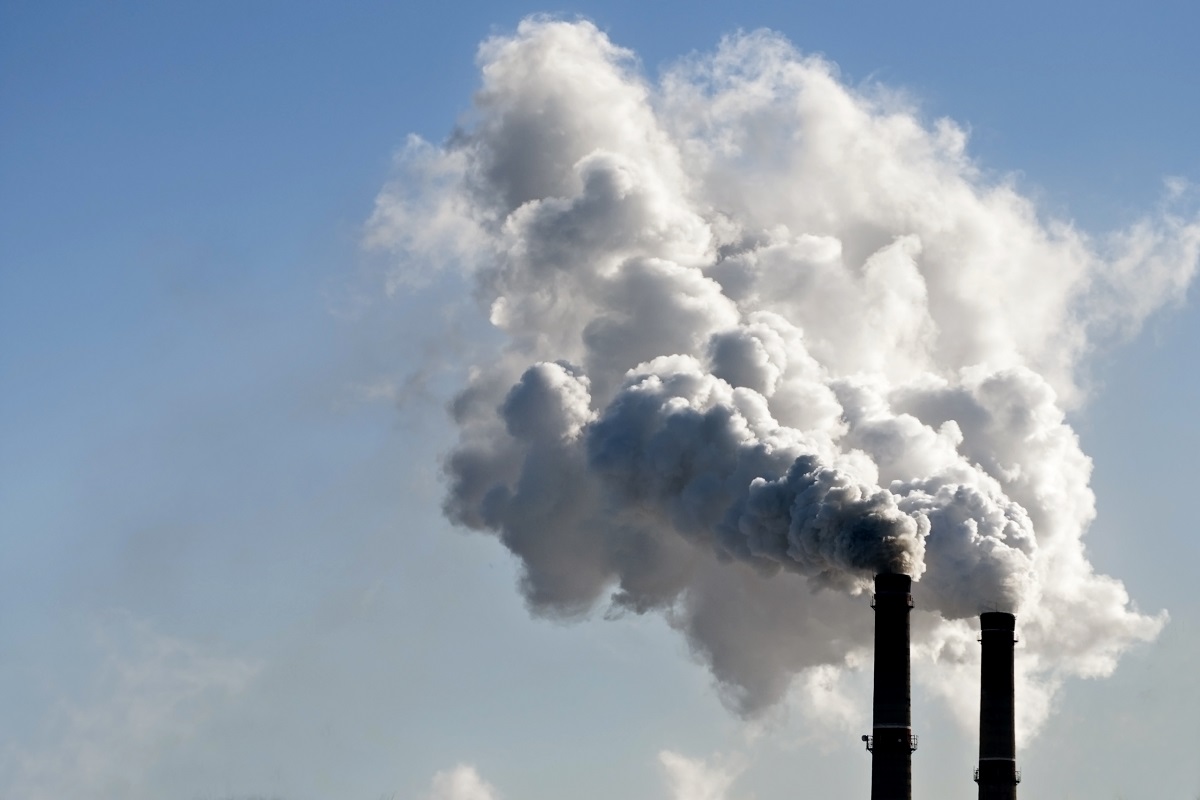President Joseph Biden, Jr., wasted no time in making good on his campaign promise to rejoin the Paris Climate Accord, also known as the Paris Agreement. In one of his first acts in office, Biden sent a letter to the United Nations (UN) to begin the formal 30-day process for the United States to rejoin the Agreement.
History on the Paris Climate Agreement
“The Paris Agreement is a landmark environmental accord that was adopted by nearly every nation in 2015 to address climate change and its negative impacts,” according to the Natural Resources Defense Council (NRDC). “The deal aims to substantially reduce global greenhouse gas emissions in an effort to limit the global temperature increase in this century to 2 degrees Celsius above preindustrial levels, while pursuing means to limit the increase to 1.5 degrees. The agreement includes commitments from all major emitting countries to cut their climate-altering pollution and to strengthen those commitments over time. The pact provides a pathway for developed nations to assist developing nations in their climate mitigation and adaptation efforts, and it creates a framework for the transparent monitoring, reporting, and ratcheting up of countries’ individual and collective climate goals.”
The agreement specifically calls for “at least 20 percent of all road transport vehicles globally to be electrically driven by 2030 – if warming is to be limited to 2 degrees or less. Of this, light vehicles would primarily contribute: more than 400 million two and three-wheelers in 2030, up from roughly 230 million today; and more than 100 million cars in 2030, up from 1 million today.”
On June 1, 2017, President Donald Trump announced that the United States was withdrawing from the Paris Climate Agreement. “The Paris Climate Accord is simply the latest example of Washington entering into an agreement that disadvantages the United States to the exclusive benefit of other countries … Compliance with the terms of the Paris Accord and the onerous energy restrictions it has placed on the United States could cost America as much as 2.7 million lost jobs by 2025 according to the National Economic Research Associates,” Trump said.
Trump went on to state that the agreement is inequitable to the United States because it allows China to increase emissions for a period of 13 years, while the United States must reduce emissions. “India makes its participation contingent on receiving billions and billions and billions of dollars in foreign aid from developed countries. There are many other examples. But the bottom line is that the Paris Accord is very unfair, at the highest level, to the United States,” he said.
Ironically, the Obama administration was one of the major architects of the Paris Agreement. The United States is the second-largest contributor to global emissions, with China being the largest. Although America comprises a mere 4 percent of the world’s population, it is responsible for roughly one-third of all the excess carbon emissions in the atmosphere, according to The Hill. When the United States left the Agreement, the decision negatively impacted the global goals of all the countries that joined it.
Specific Paris Agreement Goals
- Each country sets its own individual goals to slow the rise of global temperatures.
- The current pledges set by member countries will not significantly impact the climate crisis, so increasingly ambitious goals, known as Nationally Determined Contributions (NDCs), must be set and submitted every 5 years. This is known as the Agreement’s “ratchet mechanism.” Updated NDCs were due at the end of 2020.
- “The Paris deal also provides pathways for richer countries to help poorer ones, some of which are already bearing the brunt of the climate crisis, to reduce their emissions and adapt to a rapidly-changing planet,” according to British newspaper Independent.
Biden’s Position
“‘I will join the Paris Accord because with us out of it, look what’s happening. It’s all falling apart,’ Biden said during his first presidential debate with Donald Trump, pointing to the rampant destruction of Brazil’s rainforests, happening in the vacuum of U.S. diplomatic leadership,” according to Independent.
The Biden administration has the distinction of having the most aggressive climate change plan in history, with a goal of net-zero emissions by 2050 and a $2 trillion clean energy and infrastructure plan.
“Reaching net zero global carbon emissions as early as 2050 will take a wholesale transformation of the global economy,” said John Kerry, Biden’s special presidential envoy for climate, according to Financial Times.
On January 21, 2021, Kerry said that “the new administration acknowledged, ‘with pain and some embarrassment,’ the damage caused by Donald Trump’s ‘reckless’ decision to pull out of the Paris accord,” Financial Times says. “But a green transition would create ‘millions of jobs,’ he said, and the world was facing ‘an unprecedented wealth creation opportunity.’”
Approximately 200 countries joined the Agreement, and the rest of the world is closely watching the Biden administration to see how it will achieve its ambitious 2050 zero-emissions goal.
“The four years of reversals, rollbacks and the United States having neglected or abdicated its role or responsibility in addressing climate change definitely had a negative impact on the kind of global motivation and pace of action on climate change,” said Shyla Raghav, Vice President of Climate Change, Global Strategy Group for Conservation International, in an NPR interview on January 24, 2021.
“‘I wouldn’t be surprised if they get a standing ovation just by entering the room,’ former U.N. climate chief Christiana Figueres said, referring to a U.S. return to global climate talks,” according to The Hill. ‘That doesn’t mean that they will have a standing ovation forever. They have to prove that they are really determined to make the changes that are necessary.’
“U.N. Secretary General Antonio Guterres is one of the many who welcomed America’s return to the Paris accord, with an added caveat: ‘There is a very long way to go. The climate crisis continues to worsen and time is running out to limit temperature rise to 1.5 degrees Celsius and build more climate-resilient societies that help to protect the most vulnerable,’” notes The Hill.
Impacts of Rejoining the Paris Agreement
After 4 years’ absence from the Agreement, the United States now has some catching up to do.
The next UN Climate Summit will be held in Glasgow in November, and all Agreement members must submit new and improved NDCs.
“For the US, that means going beyond its initial aim, when it first joined the Paris accord, of reducing greenhouse gas emissions by 28 per cent by 2025 compared with 2005 levels,” according to Financial Times.
When Trump withdrew from the Agreement, he did not request the withdrawal of the 2016 NDC, so it will likely remain in place when the United States officially reenters the Agreement in February. However, the climate summit meeting in November is a hard deadline for the United States to submit an updated NDC.
It’s a time-consuming process, as there are many groups involved in the research and consultation to develop the NDC, including business and labor groups, local government, scientists, and researchers.
Another consideration is the funding role the United States is expected to play to assist other countries that have already been negatively impacted by climate change to the current tune of $70 billion, a cost that continues to increase.
“So far, the U.S. has only fulfilled $1 billion out of a $3 billion commitment to the Green Climate Fund, which supports developing nations’ efforts to address climate change,” according to The Hill.
“Rejoining is just the threshold,” Rachel Cleetus, policy director for the climate and energy program at the Union of Concerned Scientists, told Fast Company, according to The Hill article. “We need to do a lot more to show the world that the U.S. is going to do its fair share.”
Speculation About Impact to Industry
Many experts agree, based on Biden’s campaign pledges and his initial actions since taking office, industry is likely to see the following:
- Investments in renewable energy.
- Tougher efficiency standards for appliances.
- Stronger fuel economy standards for vehicles.
- Many environmental groups and progressives are pushing for the temporary halt on permitting for oil and gas leasing on federal lands and waters to become permanent.
“Roughly a quarter of the country’s entire greenhouse gas emissions come from fossil fuels that are extracted from public lands,” said Nathan Rott, NPR’s environmental correspondent, in the NPR interview. “So, putting a halt to that practice could potentially bring emissions down long-term. The thing is it would also hurt economies in some … states … like Wyoming and New Mexico or Alaska, whose economies really depend on that kind of extractive industry.”
Making the ban permanent will likely result in legal challenges and defense costs for the federal government.
The Social Cost of Carbon
Calculating the “social cost” of carbon will largely influence federal climate change policy, which will trickle down to policy for many states, as well.
The social cost of carbon is “the estimated cost to society of releasing a ton of carbon dioxide, the main greenhouse gas, into the atmosphere,” according to Bloomberg Law. “The figure takes into account everything from lost agricultural productivity to property damages from strong storms, to diminished freshwater availability—all because of climate change.”
Once that cost is determined, it’s multiplied by each additional ton of greenhouse gas produced or reduced by any proposed new rules to determine the precise cost of the new rule and whether that cost is a plus or a minus to society.
This cost has been part of these calculations since 2009.
“The Obama administration’s Interagency Working Group on the Social Cost of Greenhouse Gases set the first federal social cost of carbon at $21 per ton,” according to Bloomberg Law. “When President Barack Obama left office in 2017, the figure had risen to $52 per ton.”
Trump disbanded that group and recalculated the social cost of carbon, in some cases, at a price tag as low as $1 per ton. The lower figure for the Trump administration was due to the consideration of only domestic costs while excluding global costs.
Biden is reforming the interagency working group, which will pull “together experts from across the federal bureaucracy under the auspices of the White House Council of Economic Advisers and the Office of Management and Budget,” Bloomberg Law says.
Biden has called for this group to put together a new “interim” social cost of carbon that utilizes the full global costs, “including climate risk, environmental justice, and intergenerational equity.”
“Michael Greenstone, an economics professor at the University of Chicago, said reverting to the Obama-era calculations would yield a social cost of carbon of $125 per ton, assuming it took into account lower interest rates in recent years,” according to Bloomberg Law.
Enforcement actions to achieve emissions reductions will likely include some sort of price tag for carbon emissions, which many companies, including those in the oil and gas industry, have said they’ll support. Other measures are predicted to include a “legislative approach centered on economic stimulus, clean energy investments, and sector-specific decarbonizations standards,” according to the Environmental & Energy Law Program at Harvard Law School.
“‘One of the core challenges for the administration is going to be reframing this as opportunity for green growth, for jobs – for the kind of things we’ve seen in Europe, which has managed to significantly grow its economy while reducing its carbon emissions,’ said Kelley Kizzier, a former European Union climate negotiator who now works at the nonprofit Environmental Defense Fund,” according to The Hill.



